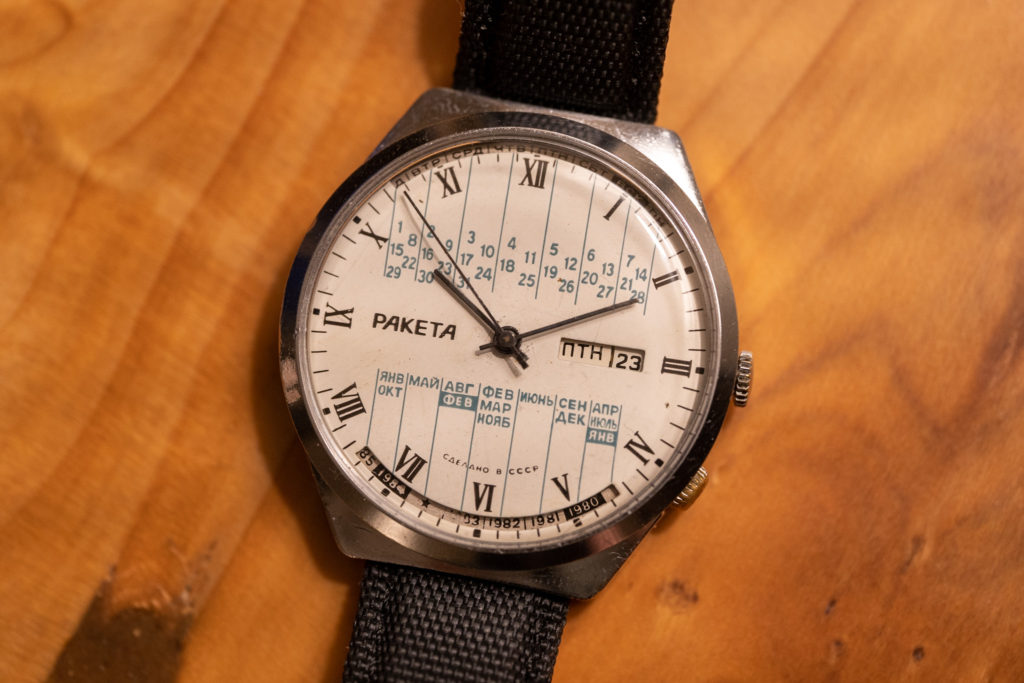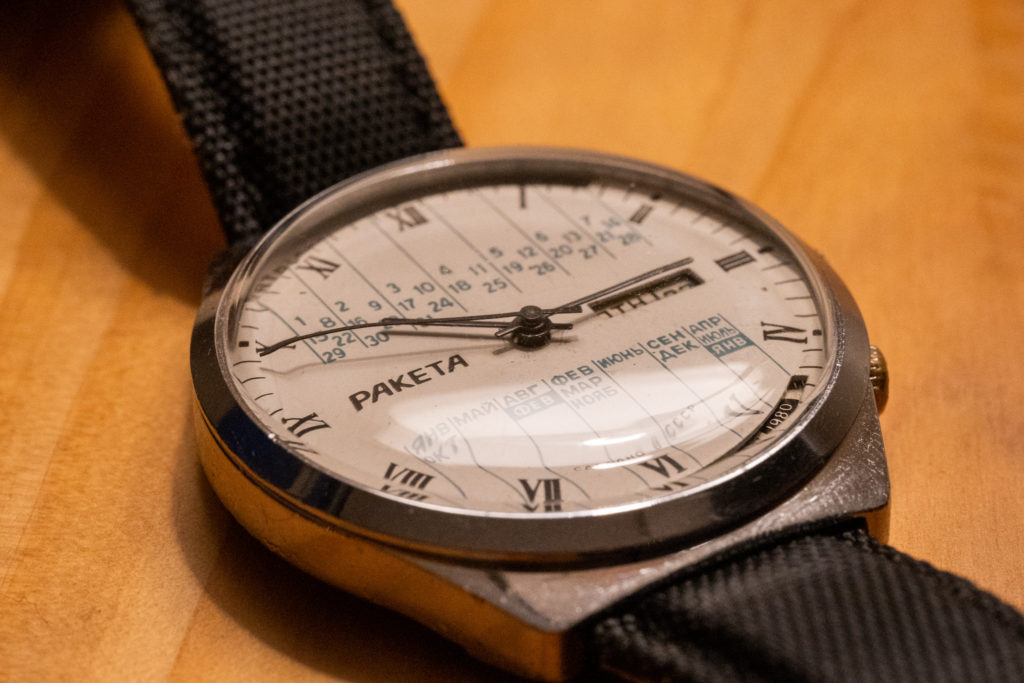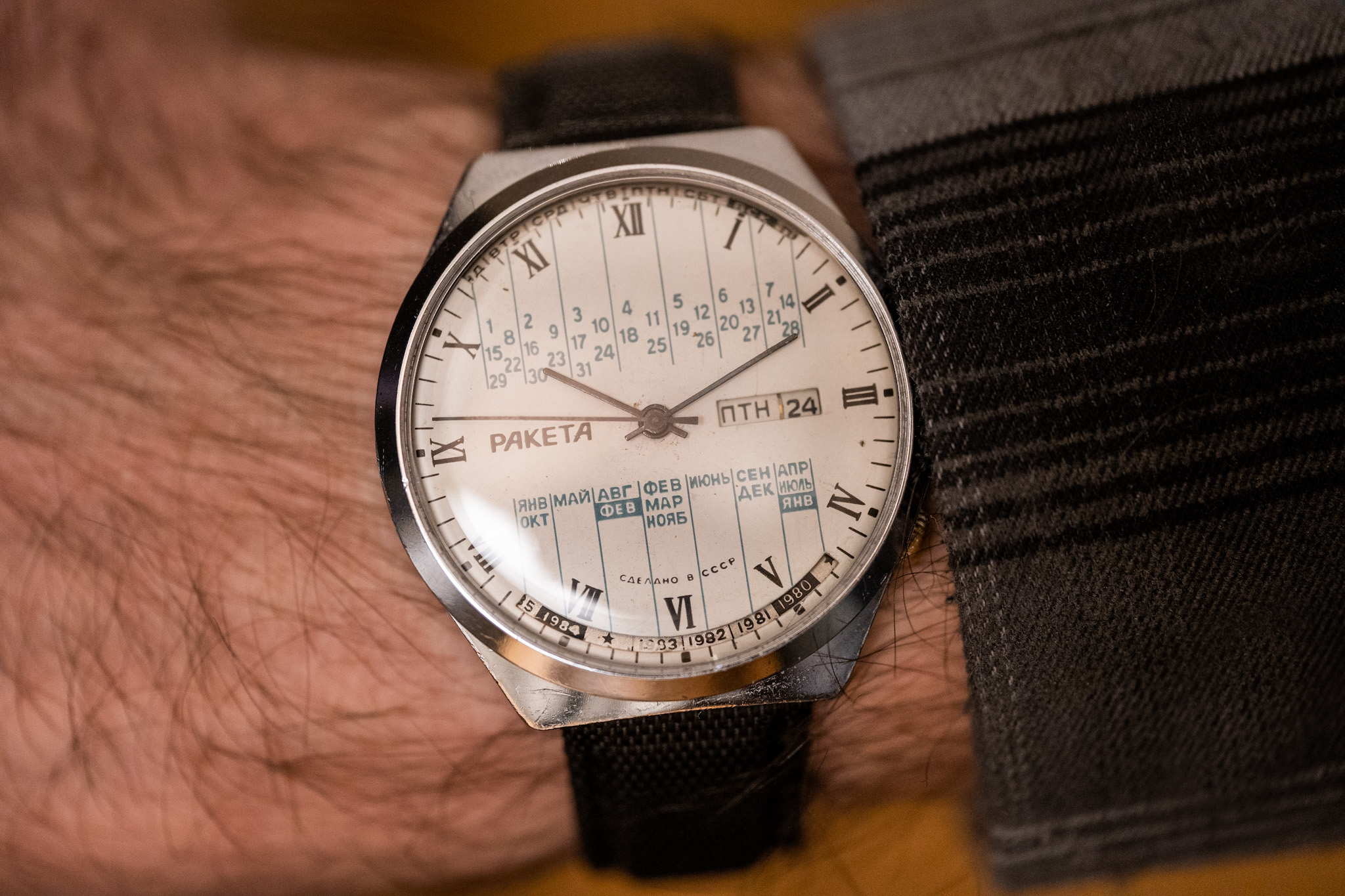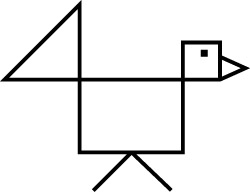If you’re like me and you spend a lot of time on eBay hunting for sweet vintage watches, you’ll have come across a bunch of these Soviet era pieces from companies like Raketa and Poljot. The main attraction with these watches are that they are cheap and the cases are big. We all know the pain associated with finding a gorgeous, affordable, vintage piece only to dig through the description (praying that it’s at least 36mm) only to find out that it’s 32mm or even worse. Enter the Raketa Perpetual Calendar.
The Raketa Perpetual Calendar (the company name means “rocket” in Russian) measures at 39.5mm and wears even bigger. Add to that the fact that these watches routinely go for under 50USD and you’ve got my interest.
The price of the Raketa Perpetual Calendar brings us to two pre-purchase concerns: 1. It has to be poorly built right? 2. The design language of this watch is… well lets just say it’s multilingual?
First, the build quality: It’s not super high. The case is plated brass. It has a snap-on caseback that is a bit light on the snapping. It feels kind of cheap in hand. The inner rotating part on the dial is built from a different material than the dial itself. The dial is printed with no applied indices or date window frames or anything. It’s pretty bare bones construction. But then I restored the movement of this Raketa Perpetual Calendar, and I was pleasantly surprised.

The movement of the Raketa Perpetual Calendar isn’t anything fancy; in fact it’s the opposite; its pure utilitarian design is refreshing and I was able to get the watch running to +/- 3 seconds a day with little more than a movement servicing. It was well built and sturdy for the price, and I would expect it to run as long as any mid-tier Swiss movement. Shocking really, and owed to the fact that Raketa in the 80’s was pumping out 5 million (!) watches a year.
Second, the looks. There’s a lot to tackle here. The 18mm lugs are too small. The hands are (way) too short. The dial has a mix of Cyrillic text, Roman numerals, and Arabic numerals on it. The crowns are too small and are weirdly shaped. It has this cascade of numbers on the top half of the dial that are reminiscent of seeing the Matrix for the first time. It’s a lot from the Raketa Perpetual Calendar.

Here’s the weird part: it all just kind of works. It’s quirky in a good way. It’s so ugly it’s cool. People actually ask about it. It’s a legit conversation starter as it’s from another country and another time, with a different language on it, and a “perpetual calendar” complication that isn’t. Ostensibly it has the ability to show relevant information about the year or date or something but it seems indecipherable and according to the outside indicator on the dial (which is rotated by the lower crown) it only tracks up until the late 1990s. I’m sure with a graphing calculator and 20 minutes to spare you could figure out something. But it doesn’t matter. I wouldn’t have guessed it, but I recommend getting one of these. They are fun, modern-sized, absurdly styled, and of quality far in excess of their sub-$100.00 price tag.


Leave a Reply
You must be logged in to post a comment.